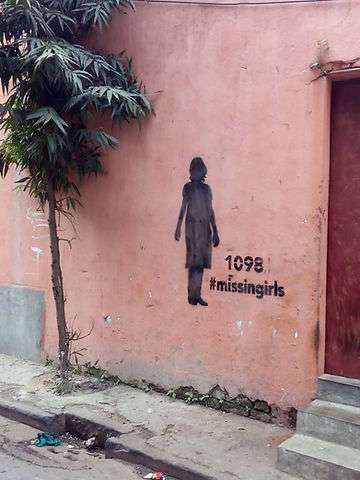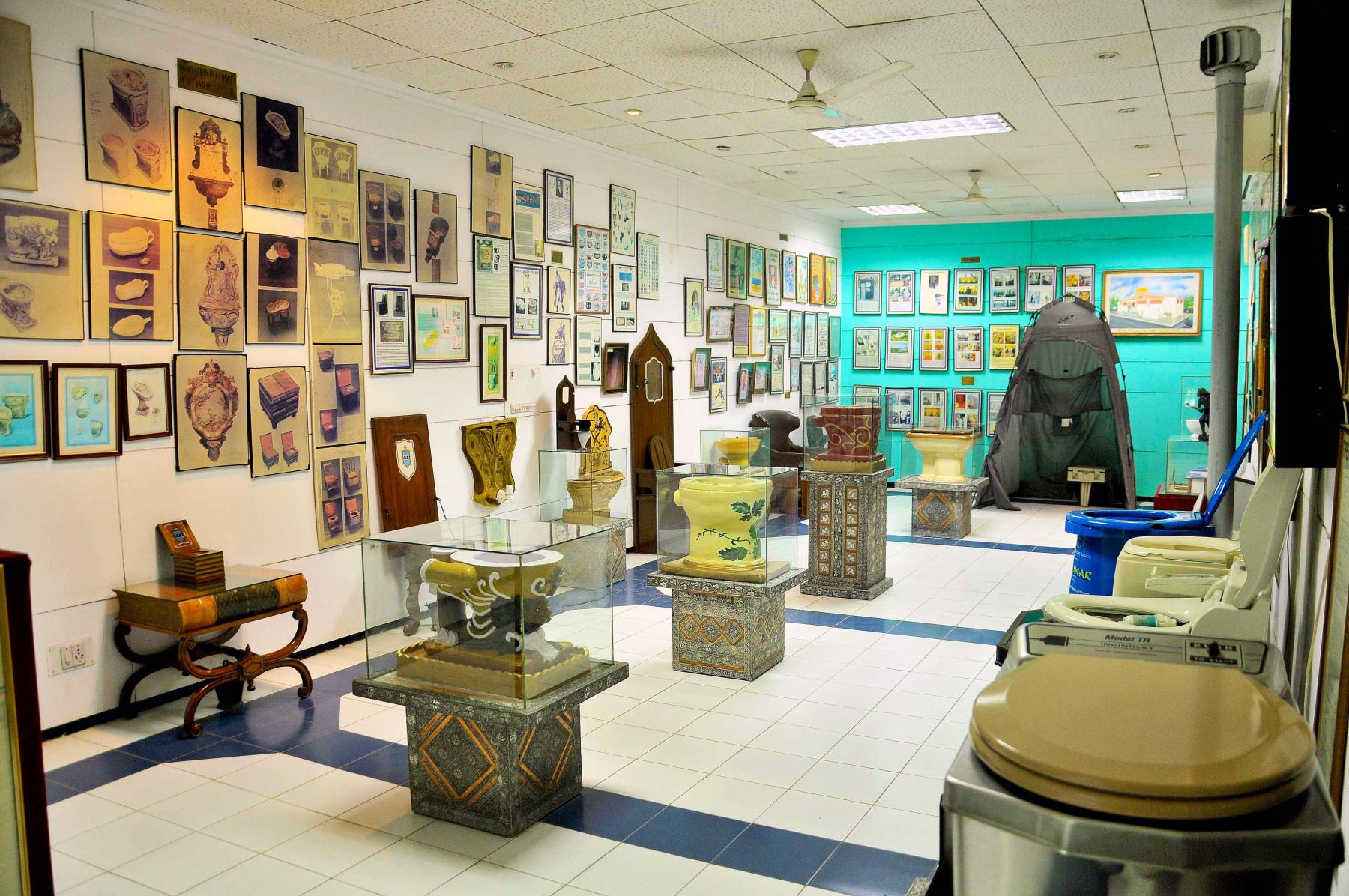If you picked up artist Leena Kejriwal’s coffee table book exploring Kolkata’s culture-scape, ‘Calcutta: Repossessing The City,’ you’d likely be curious about the cover image on the hardcover tome. An emerald green sari tucked into a door flutters in the wind against a cherry red wall. If you’ve never been to a brothel you wouldn’t know what it means. But to sex workers, customers and activists who frequent them in India, the recognition is instant to dawn – it means a session of purchased sex is in progress and the occupants are not to be disturbed.

The Green Sari
When she captured this image in 2002, in a brothel in Kalighat, it was the first time Leena was visiting a brothel. These ubiquitous spaces in the city were a casual inclusion in her photo book. But today brothel visits all over India are de rigueur for her. Her first experience of a red-light district in action sparked a purpose that’s always been embedded in her subconscious.
While growing up, Leena’s family home was close to Sonagachi – India’s largest red-light district. Her awareness of what such a district is and what happens there occurred early in life. She grew up hearing tales of girls and women being captured against their will and put to work there. Every time their car passed the lane, the children were instructed to turn their heads away and not look.

Leena came to art much later in life, having devoted the first half of it to conscientiously obeying the diktats of her traditional Marwari upbringing. The thrilling power she experienced behind the lens of a camera and the language of freedom that art afforded her helped her mould her life on her own terms. It’s the same language she utilises today to turn the spotlight on the one of the most pervasive and horrifying truths in our society today – the sex-trafficking of little girls and young women across the country.
The silhouette
Leena finally hit upon an effective way to combat the double jeopardy of inaction and enabling – by tapping into the public’s sense of empathy. She created a larger than life silhouette of a girl using steel and iron and painted it black. The black was to symbolise the black hole of trafficking into which millions of girls every year fall into and disappear, never to be heard of again. The public art project debuted at the India Art Fair in 2014 to critical acclaim.

Since then, the silhouette has propped up at unsuspecting street corners and public walls where people from all corners of life can encounter it. You are walking down the street and suddenly you come face to face with the dark silhouette of a little girl. You wonder who is she, where did she come from, what is her story?

By creating a visual metaphor of disappearance, Leena’s art creates empathy and generates curiosity. It’s a meaningful starting point of dialogue, one that transcends boundaries of language. It’s a beautiful example of how to use art as activism, not least because Leena encourages crowdsourcing it. You can download the stencil from her website, arm yourself with a can of black spray paint and help create awareness that will prevent this evil.
The game
Apart from street art, Leena also hit upon another idea that could mobilise public action – gaming. She crowdfunded $50,795 on Kickstarter to launch the Missing game, which she co-created with designer Satyajit Chakraborty. The gaming industry is notorious for objectification of women. In this one, the role reversal helps you empathise with the victim as she tries her best to escape. It puts players in the shoes of a missing girl as she runs into obstacles that threaten her mission.
The game was downloaded half a million users within a year of debuting and caught the attention of the international gaming community. It’s commercial and critical success has enabled her to raise funds to develop a second one.
Awareness = Prevention
Leena’s motto is Awareness = Prevention. The more people are brought face to face with the realities of the flesh trade, the less likely perpetrators will be able to get away with it. The more we stop being passive consumers of a sex-obsessed culture, the less demand there will be of little girls and young women as slaves. And the more we stare into the shadowy silhouette of a young girl and wonder what happened to her, the more we will care.
Meanwhile, each day this public art effort helps bring awareness to this cause, one wall at a time.




